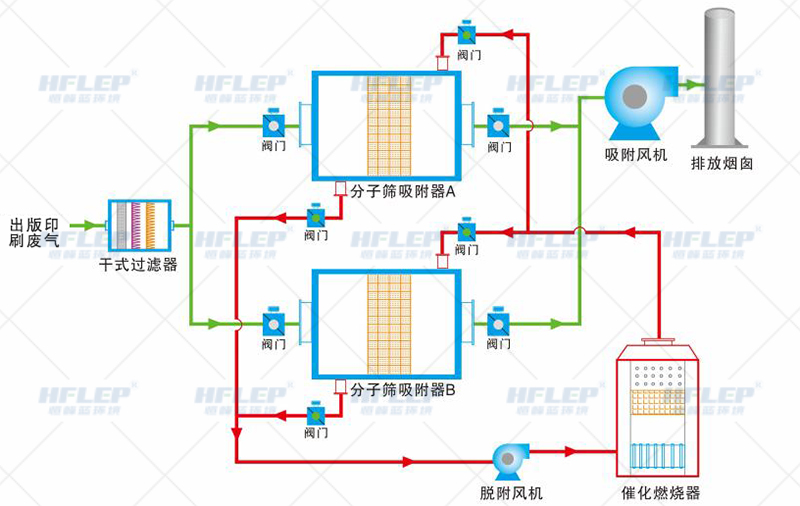Experienced Manufacturers
Production plant area of more than 10,000 square feet, more than 100 people construction team.
 Hotline
Hotline

Industry Introduction
Matrix materials for composites are divided into two categories: metallic and non-metallic. Metal matrix commonly used are aluminium, magnesium, copper, titanium and their alloys. Non-metallic matrix is mainly synthetic resin, rubber, ceramics, graphite, carbon and so on. Reinforcement materials mainly include glass fibre, carbon fibre, boron fibre, aramid fibre, silicon carbide fibre, asbestos fibre, whisker, metal and so on. Nowadays, the development of modern high-tech is inseparable from the composite materials, composite materials for the development of modern science and technology, has a very important role. The depth of research and application of composite materials and the speed and scale of their production and development have become one of the important symbols to measure the advanced level of science and technology in a country.
Pollution hazards
Then in the R & D and production of composite materials in the process will certainly produce organic waste gas, such as in the mixing, hot melt, extrusion and so on post operation process produces volatile organic compounds, referred to as & ldquo; non-methane hydrocarbons & rdquo;. Long-term inhalation of these organic emissions will have a serious impact on human organs, lungs, heart and mouth, brain and other parts of the body, such as coughing, skin eczema, haematopoietic system to white blood cell reduction is the most common, mainly for the reduction of neutrophils, long-term exposure to the human body is prone to aplastic anaemia, leukaemia and so on.
Overview of composite material exhaust treatment programme
For the composite material exhaust VOCs treatment technology, now in line with environmental emission requirements, and play a cost-effective treatment technology, is the use of reduced wind concentration + combustion method of treatment technology is more economical and energy-saving. Suggested use: wet jet washing (multi-pipe) + dry filter + wind enrichment + catalytic combustion combination of governance, governance can meet the emission requirements of standards!
Composite material exhaust treatment process

Wet jet washing (multi-tube) + dry filtration + molecular sieve adsorption and concentration + catalytic combustion process (integrated system) process treatment. Organic waste gas is collected through the pipeline, and enters the pretreatment wet jet tower to remove paint dew, acidity and particles of purification. After purification, the gas is introduced into the dry filter to remove particles and harmful substances on the activated carbon adsorption, and the organic waste gas is then sent to the activated carbon adsorption bed device, and the VOCs components in the waste gas are absorbed by the activated carbon and then discharged to the atmosphere in compliance with the standards.
When the activated carbon adsorption bed saturated by electric heating high temperature (100-280 ℃) desorption of VOCs substances, desorption of high concentrations of organic waste gas directly into the catalytic combustion CO, through the accelerated oxidation of high concentrations of waste gas by precious metals, in ( 250-350 ℃) high temperature purification and oxidation of harmless carbon dioxide (CO2) and water vapour (H20) and meet the standards of emission into the atmosphere.
Other treatment technology programmes
Low concentration and small air volume composite new material exhaust gas can be used: spray tower, uv photolysis purifier, activated carbon adsorption and other single or multiple combinations of processes for treatment;
High concentration of small air volume composite new material waste gas can be used: pretreatment + zeolite molecular sieve + catalytic combustion, pretreatment + zeolite molecular sieve + RTO thermal storage incinerator, a single catalytic combustion device or a single RTO thermal storage incinerator and so on;
High concentration and large air volume composite new material exhaust gas can be used: pretreatment + zeolite rotor concentration + catalytic combustion or pretreatment + zeolite rotor concentration + RTO thermal storage incinerator and so on.
Reason for choice

Production plant area of more than 10,000 square feet, more than 100 people construction team.

A number of engineers and technicians, most of whom have more than 10 years of experience and have worked on numerous projects.

Adoption of the latest domestic and international treatment technology, with high treatment efficiency.

According to the actual needs of the project, free to customise the corresponding exhaust gas treatment solutions, all regions of the country package to meet the emission standards.

Passed the third level of construction enterprise qualification and a number of technical patents...

1000+ project experience, more than 100 industry partners, complete environmental protection qualification.
Contact - Ways
Contact information
Catalytic combustion machine is a dry filter + adsorption de...

Activated carbon adsorption and desorption + CO catalytic co...

Zeolite rotor concentration + RTO regenerative incinerator c...

Zeolite rotor concentration + CO catalytic combustion proces...

CO catalytic combustion + TO direct combustion furnace proce...

For low concentration and low air volume of waste gas treatm...


Industry Introduction
Matrix materials for composites are divided into two categories: metallic and non-metallic. Metal matrix commonly used are aluminium, magnesium, copper, titanium and their alloys. Non-metallic matrix is mainly synthetic resin, rubber, ceramics, graphite, carbon and so on. Reinforcement materials mainly include glass fibre, carbon fibre, boron fibre, aramid fibre, silicon carbide fibre, asbestos fibre, whisker, metal and so on. Nowadays, the development of modern high-tech is inseparable from the composite materials, composite materials for the development of modern science and technology, has a very important role. The depth of research and application of composite materials and the speed and scale of their production and development have become one of the important symbols to measure the advanced level of science and technology in a country.
Pollution hazards
Then in the R & D and production of composite materials in the process will certainly produce organic waste gas, such as in the mixing, hot melt, extrusion and so on post operation process produces volatile organic compounds, referred to as & ldquo; non-methane hydrocarbons & rdquo;. Long-term inhalation of these organic emissions will have a serious impact on human organs, lungs, heart and mouth, brain and other parts of the body, such as coughing, skin eczema, haematopoietic system to white blood cell reduction is the most common, mainly for the reduction of neutrophils, long-term exposure to the human body is prone to aplastic anaemia, leukaemia and so on.
Overview of composite material exhaust treatment programme
For the composite material exhaust VOCs treatment technology, now in line with environmental emission requirements, and play a cost-effective treatment technology, is the use of reduced wind concentration + combustion method of treatment technology is more economical and energy-saving. Suggested use: wet jet washing (multi-pipe) + dry filter + wind enrichment + catalytic combustion combination of governance, governance can meet the emission requirements of standards!
Composite material exhaust treatment process

Wet jet washing (multi-tube) + dry filtration + molecular sieve adsorption and concentration + catalytic combustion process (integrated system) process treatment. Organic waste gas is collected through the pipeline, and enters the pretreatment wet jet tower to remove paint dew, acidity and particles of purification. After purification, the gas is introduced into the dry filter to remove particles and harmful substances on the activated carbon adsorption, and the organic waste gas is then sent to the activated carbon adsorption bed device, and the VOCs components in the waste gas are absorbed by the activated carbon and then discharged to the atmosphere in compliance with the standards.
When the activated carbon adsorption bed saturated by electric heating high temperature (100-280 ℃) desorption of VOCs substances, desorption of high concentrations of organic waste gas directly into the catalytic combustion CO, through the accelerated oxidation of high concentrations of waste gas by precious metals, in ( 250-350 ℃) high temperature purification and oxidation of harmless carbon dioxide (CO2) and water vapour (H20) and meet the standards of emission into the atmosphere.
Other treatment technology programmes
Low concentration and small air volume composite new material exhaust gas can be used: spray tower, uv photolysis purifier, activated carbon adsorption and other single or multiple combinations of processes for treatment;
High concentration of small air volume composite new material waste gas can be used: pretreatment + zeolite molecular sieve + catalytic combustion, pretreatment + zeolite molecular sieve + RTO thermal storage incinerator, a single catalytic combustion device or a single RTO thermal storage incinerator and so on;
High concentration and large air volume composite new material exhaust gas can be used: pretreatment + zeolite rotor concentration + catalytic combustion or pretreatment + zeolite rotor concentration + RTO thermal storage incinerator and so on.